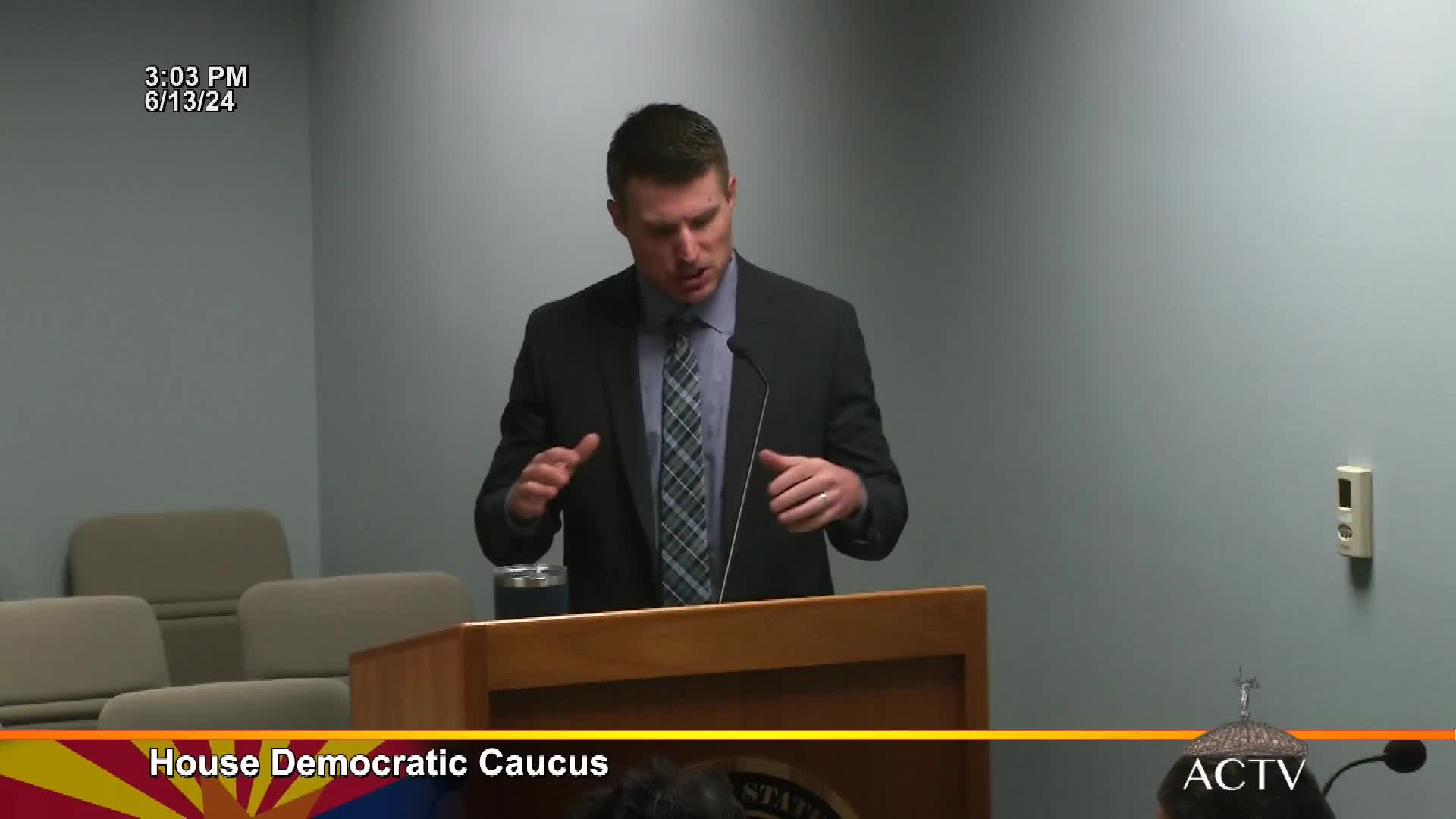Budget Cuts Spark Controversy Over Opioid Settlement Funds
June 13, 2024 | Caucus, House of Representatives, Committees, Legislative, Arizona

This article was created by AI summarizing key points discussed. AI makes mistakes, so for full details and context, please refer to the video of the full meeting. Please report any errors so we can fix them. Report an error »

In a recent government meeting, significant budget changes were discussed for the Department of Child Safety and the Department of Corrections, highlighting ongoing financial challenges and adjustments in response to legal requirements.
The Department of Child Safety is facing a substantial reduction of $24 million in its ongoing budget for fiscal year 2025. While some spending items will be temporarily restored, the overall budget cut raises concerns about the department's capacity to address child welfare effectively.
Conversely, the Department of Corrections is set to receive a considerable budget increase of $188 million to address healthcare litigation and medication requirements for inmates. This increase includes $107 million allocated to a private vendor for inmate healthcare, $55 million for medications mandated by a court injunction—specifically for hepatitis C treatment and substance use disorder therapies—and $26 million for IT upgrades to improve inmate healthcare tracking.
The meeting also revealed a contentious plan to repurpose $75 million from opioid settlement funds to offset costs associated with incarcerating individuals affected by the opioid crisis. This decision has sparked debate among representatives, with concerns raised about the appropriateness of using these funds for incarceration rather than treatment. Critics argue that this approach contradicts the intended use of the settlement funds, which are meant to support addiction treatment rather than penalize those struggling with substance use disorders.
The discussion underscored the complexities of managing state budgets in the face of legal obligations and the ongoing opioid epidemic, raising questions about the effectiveness of current strategies in addressing both child safety and inmate health care.
The Department of Child Safety is facing a substantial reduction of $24 million in its ongoing budget for fiscal year 2025. While some spending items will be temporarily restored, the overall budget cut raises concerns about the department's capacity to address child welfare effectively.
Conversely, the Department of Corrections is set to receive a considerable budget increase of $188 million to address healthcare litigation and medication requirements for inmates. This increase includes $107 million allocated to a private vendor for inmate healthcare, $55 million for medications mandated by a court injunction—specifically for hepatitis C treatment and substance use disorder therapies—and $26 million for IT upgrades to improve inmate healthcare tracking.
The meeting also revealed a contentious plan to repurpose $75 million from opioid settlement funds to offset costs associated with incarcerating individuals affected by the opioid crisis. This decision has sparked debate among representatives, with concerns raised about the appropriateness of using these funds for incarceration rather than treatment. Critics argue that this approach contradicts the intended use of the settlement funds, which are meant to support addiction treatment rather than penalize those struggling with substance use disorders.
The discussion underscored the complexities of managing state budgets in the face of legal obligations and the ongoing opioid epidemic, raising questions about the effectiveness of current strategies in addressing both child safety and inmate health care.
View full meeting
This article is based on a recent meeting—watch the full video and explore the complete transcript for deeper insights into the discussion.
View full meeting
